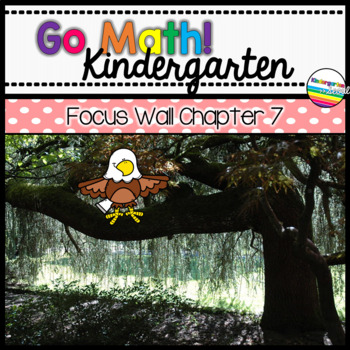Go Math! Chapter 7 Kindergarten Focus Wall
Erica Gorrell
347 Followers
Resource Type
Standards
CCSSK.CC.A.3
CCSSK.NBT.A.1
Formats Included
- PDF
Pages
44 pages
Erica Gorrell
347 Followers
Also included in
- If you use the Go Math! curriculum in your kindergarten class and you want a kid friendly focus wall, this is the wall for you! There is a video preview of what is in each chapter if you click on the individual chapters below. This bundle includes all of chapters 1-12! I had a hard time finding a foPrice $25.00Original Price $36.00Save $11.00
Description
If you use the Go Math! curriculum in your kindergarten class and you want a kid friendly focus wall, this is the wall for you! I do have a bundle with all of the chapters. If you prefer to buy that, click here. I had a hard time finding a focus wall that made sense to my kiddos and I dislike having anything in my class that my kiddos cannot use, so I created a kindergarten focus wall for my own classroom--then I had a lot of requests for a first and second grade set. I really hope it helps others out as well! If you have any other questions, please contact me! erica.gorrell@gmail.com :)
What is included in this bundle?
- Focus Wall Section Headers
- Chapter Essential Question
- Chapter We Can Statement
- Chapter 7 CCSS Addressed
- Domains Addressed
- Lesson We Can Statements
- Lesson Essential Questions
- Chapter 7 Vocabulary Cards
Total Pages
44 pages
Answer Key
N/A
Teaching Duration
N/A
Report this resource to TPT
Reported resources will be reviewed by our team. Report this resource to let us know if this resource violates TPT’s content guidelines.
Standards
to see state-specific standards (only available in the US).
CCSSK.CC.A.3
Write numbers from 0 to 20. Represent a number of objects with a written numeral 0-20 (with 0 representing a count of no objects).
CCSSK.NBT.A.1
Compose and decompose numbers from 11 to 19 into ten ones and some further ones, e.g., by using objects or drawings, and record each composition or decomposition by a drawing or equation (e.g., 18 = 10 + 8); understand that these numbers are composed of ten ones and one, two, three, four, five, six, seven, eight, or nine ones.



